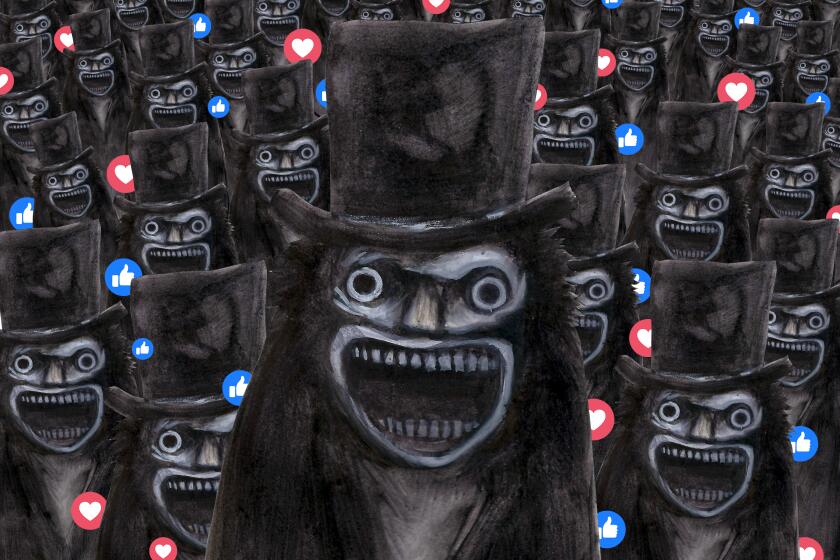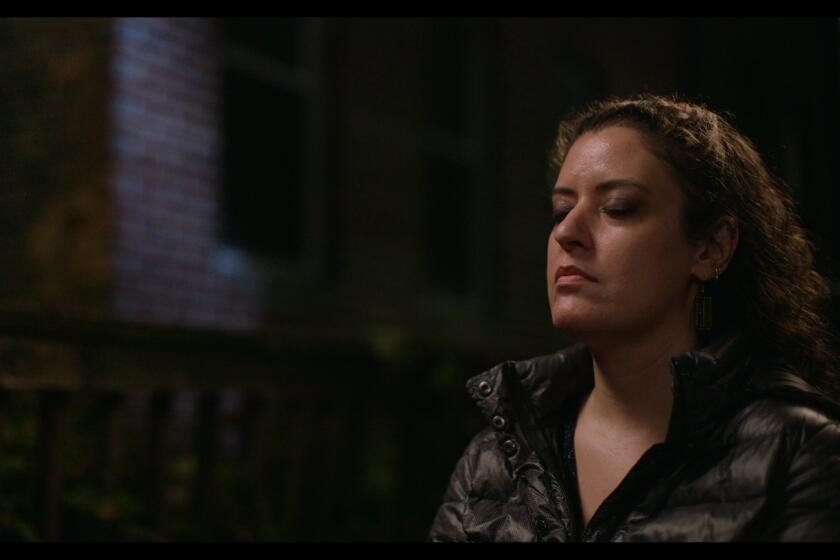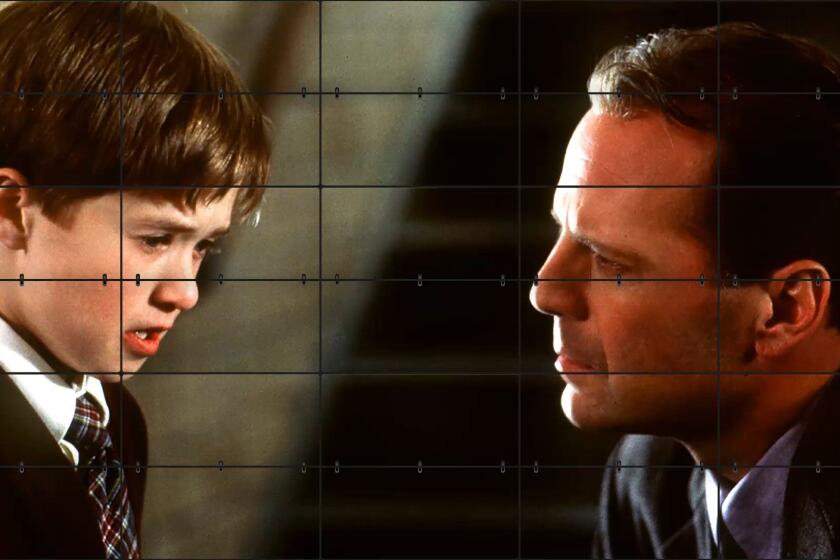Dave Holland, 70; Writer Turned Love for Westerns Into Annual Film Festival
Dave Holland, the longtime director of the Lone Pine Film Festival who helped popularize the event in the eastern Sierra town through his painstaking efforts to find the exact spots where scenes from scores of movies were shot in the nearby hills, has died. He was 70.
An author and western film historian, Holland died of esophageal cancer Monday at his home in Santa Clarita, his family said.
He was instrumental in launching the Lone Pine festival in 1990 and served as its director from 1991 to 1999. He used his Hollywood contacts to line up celebrity guests who had filmed on location in the area, and he played host to panel discussions.
Guests at the annual October event have included Gregory Peck; Douglas Fairbanks Jr.; Clayton Moore, who portrayed the Lone Ranger; and Peggy Stewart, sometimes called the “queen of the Republic westerns.”
“Dave was the greatest thing that ever happened to the Lone Pine Film Festival,” regular festival guest Loren Janes, a founder of the Stuntmen’s Assn. of Motion Pictures, said this week. “He had great enthusiasm for Lone Pine and these films.”
The gregarious Holland was at his most enthusiastic leading festival tour bus groups through the spectacular, boulder-laden Alabama Hills, which lie below Mt. Whitney on the eastern slope of the Sierra Nevada about 200 miles north of Los Angeles.
More than 300 movies and countless TV shows and commercials have been filmed there since silent movie comedian Roscoe “Fatty” Arbuckle came to town to make “The Roundup” in 1920.
Thanks to Holland’s tireless research, festival-goers can visit nearly 120 photo markers set exactly where movie cameras once stood to film John Wayne riding down a pass in “Westward Ho” (1935), Cary Grant and Sam Jaffe crossing a suspension bridge in “Gunga Din” (1939) and Tyrone Power awaiting possible death in “King of the Khyber Rifles” (1953).
Holland compiled his Alabama Hills finds in a 1990 pictorial guide, “On Location in Lone Pine.” He later revised and updated the book and produced and hosted two Lone Pine location videos.
“It wasn’t enough that he’d made these great discoveries about the locations in Lone Pine,” film historian Leonard Maltin told The Times. “He wanted to share it with other movie buffs who’d appreciate the excitement of standing on the exact spot where a Tom Mix or Roy Rogers or Hopalong Cassidy had made their films. And his enthusiasm was infectious.”
Born in Raleigh, N.C., in 1935, Holland grew up in Birmingham, Ala., watching Rogers, William Boyd -- who played Cassidy -- and other sagebrush heroes at Saturday matinees in the 1940s.
Moving to Los Angeles in 1958 after two years at Auburn University and a stint in the Navy as a photographer-journalist’s mate, Holland became a reporter and then drama editor and editor of the now-defunct Valley Times.
He later worked as a theatrical press agent and a unit production manager on films and television commercials.
Holland was already indulging his love of B-westerns by visiting places where old movies had been filmed when he made what he considered a fascinating discovery in the 1960s.
“Looking at a Gene Autry photo from ‘Boots and Saddles,’ ” Holland wrote in his book, “I noticed that he and his sidekick, ‘Frog’ (Smiley Burnett), were sitting on their horses by a tall, thick, cucumber-shaped rock which was -- it was so obvious it was startling -- at the very same spot where the Indian chase in ‘How the West Was Won’ began, and where Tim Holt had tried ditching a posse in one of his RKO pictures called ‘Guns of Hate’!”
After learning that all three movies had been filmed in the Alabama Hills, Holland and his wife, Holly, began spending weekends in Lone Pine. And, as Holland’s son Michael said this week, tracking down film sites there “just turned into a passion.”
Lone Pine Film Festival founder Kerry Powell, a native of the area, had been thinking about creating a celebration of the town’s movie heritage when a friend suggested she meet Holland, who was about to publish his location book.
After they joined forces and she served as festival director the first year, Powell turned the reins over to Holland.
“Dave was the film festival, basically,” she said. “He couldn’t have done it without hundreds of volunteers, but he had a lot of ideas. He put it together, and we all backed him up the best we could.”
Holland, Powell added, is irreplaceable. “All of that knowledge and enthusiasm -- and work. He just worked all year” on the festival. “He was always underpaid, but he did it because he loved it.”’
Over the years, the event has become one of the most successful U.S. film festivals.
The Hollands were so taken with the area that they moved from Granada Hills to Lone Pine in 1991, living on the outskirts of the Alabama Hills. They moved to Santa Clarita in 2003 to be near their children.
Holland also wrote the 1989 book “From Out of the Past: A Pictorial History of the Lone Ranger.”
In addition to his son and his wife of 45 years, he is survived by his daughter, Melody Ogburn; his half sister, Jeralyn M. Alexander; and a grandson.
A funeral will be held at 10:30 a.m. today at Forest Lawn-Hollywood Hills, 6300 Forest Lawn Drive, Los Angeles.
The family suggests that memorial contributions be made to the UCLA Film & Television Archive. Checks should be payable to the UCLA Foundation and sent to Cornelia Emerson, UCLA Film & Television Archive, 302 E. Melnitz, Box 951323, Los Angeles, CA 90095-1323.
More to Read
Only good movies
Get the Indie Focus newsletter, Mark Olsen's weekly guide to the world of cinema.
You may occasionally receive promotional content from the Los Angeles Times.










